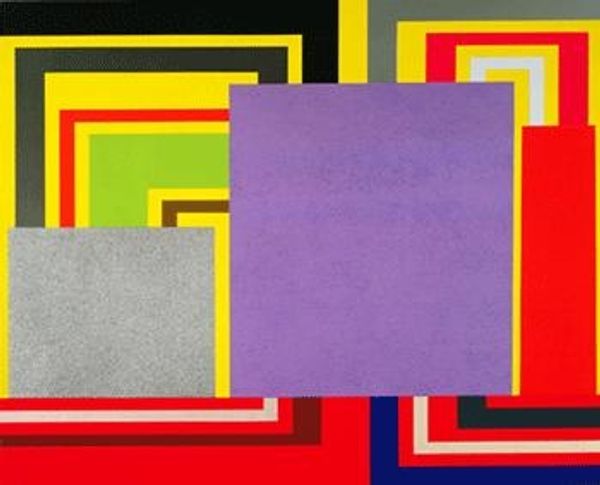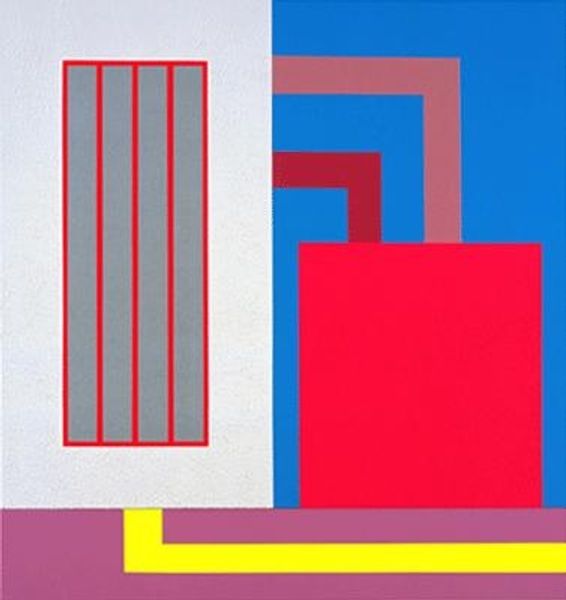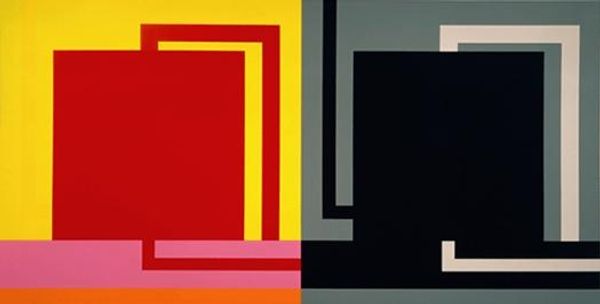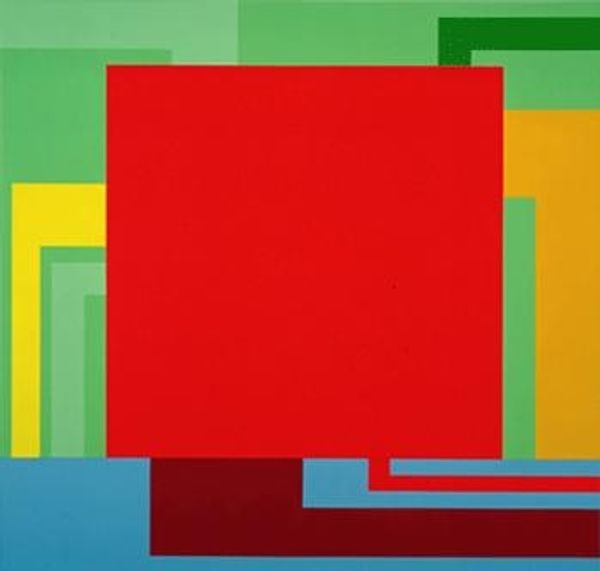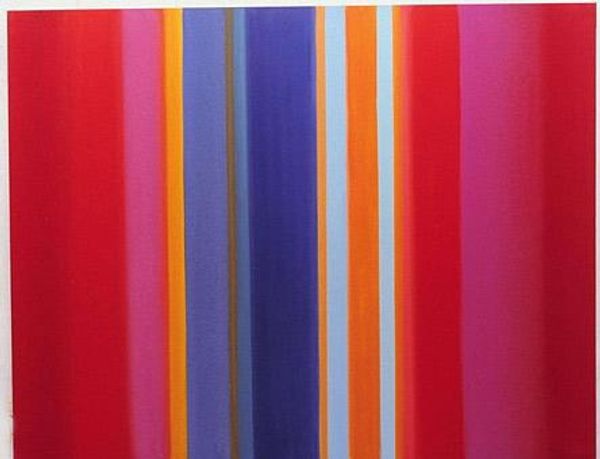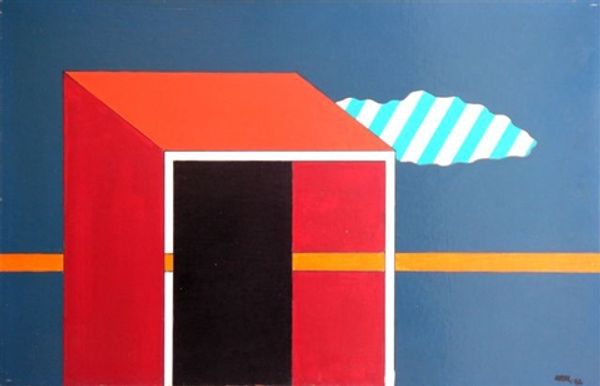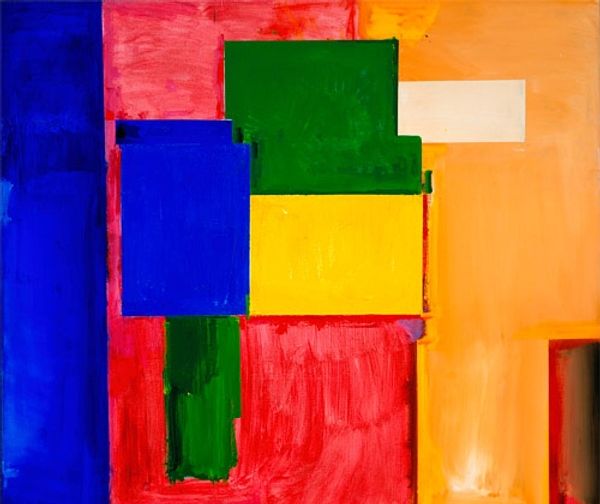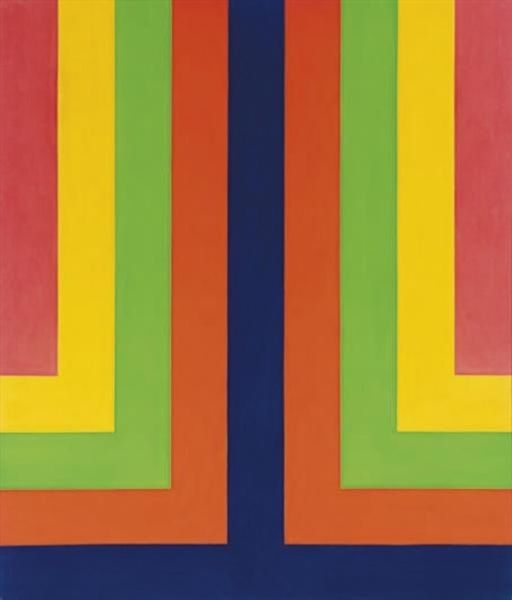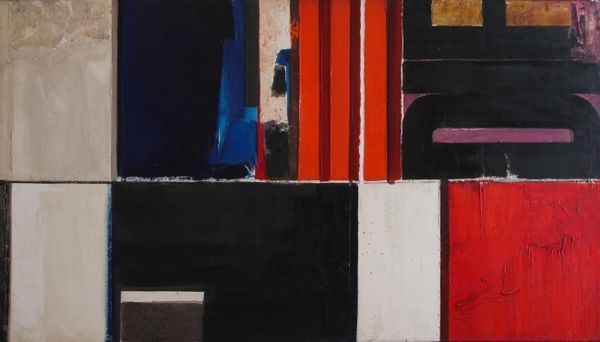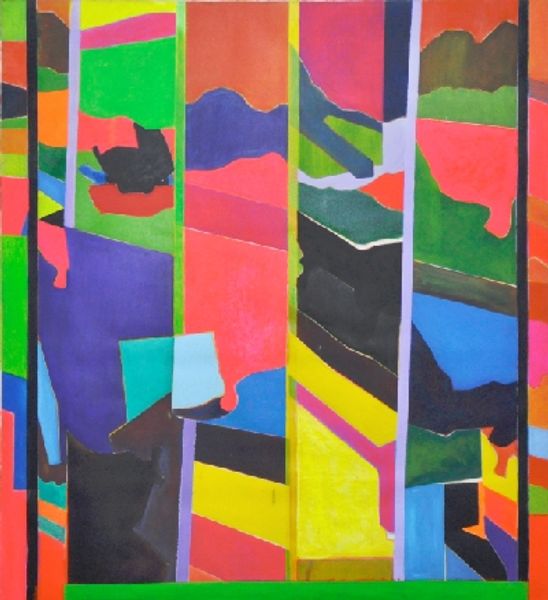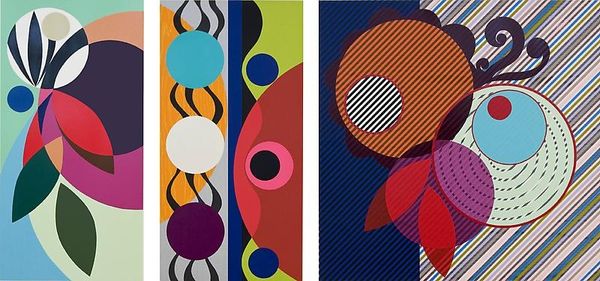
acrylic-paint
#
acrylic-paint
#
form
#
geometric pattern
#
abstract pattern
#
repetitive shape and pattern
#
rectangle
#
minimal pattern
#
geometric
#
repetition of pattern
#
vertical pattern
#
abstraction
#
line
#
pattern repetition
#
layered pattern
#
combined pattern
#
modernism
#
hard-edge-painting
#
repetitive pattern
#
orange
Copyright: Peter Halley,Fair Use
Editor: This is Peter Halley’s *Super Size*, painted in 2000, using acrylic. I find the geometric forms really striking, but there is also something about the color choices that creates a tense or even aggressive feeling. What do you see in this piece? Curator: The tense feeling is very perceptive. Halley came of age artistically during a period defined by conversations on postmodernism and simulacra, referencing society's increasing reliance on simulated experiences. The aggressive tension arises from how Halley critiques institutional power structures through abstraction. Do you notice how these ‘cells’ and ‘prisons,’ as he calls them, interact? Editor: They seem stacked on top of each other and also squished together. It's interesting that you bring up institutional power, though, because when I look at this piece I'm unsure of who holds the authority. All the shapes seem rigid. Curator: Exactly! This tension is deliberate. Think about the period; in the late 20th century, cultural critics became increasingly aware of power's dispersal rather than centralization. Halley reflects that uncertainty, the lack of a clear authority figure. This kind of painting encouraged the viewers to question the hidden geometries structuring our world, even the way we navigate public spaces like museums. Editor: That makes me consider its relation to the architecture around it, this gallery space itself, how we're organized within it. Curator: Precisely! Considering Halley’s work lets us view the museum not as a neutral container, but as an active participant in shaping meaning. It challenges the notion of the gallery as separate from the artwork it holds. Editor: I never would have made these connections if I were looking at this on my own. It is amazing how social critiques and reflections on cultural theories can manifest in abstraction. Curator: Indeed. It is a powerful demonstration of how abstraction is more than just color and form; it engages directly with socio-political landscapes.
Comments
No comments
Be the first to comment and join the conversation on the ultimate creative platform.
